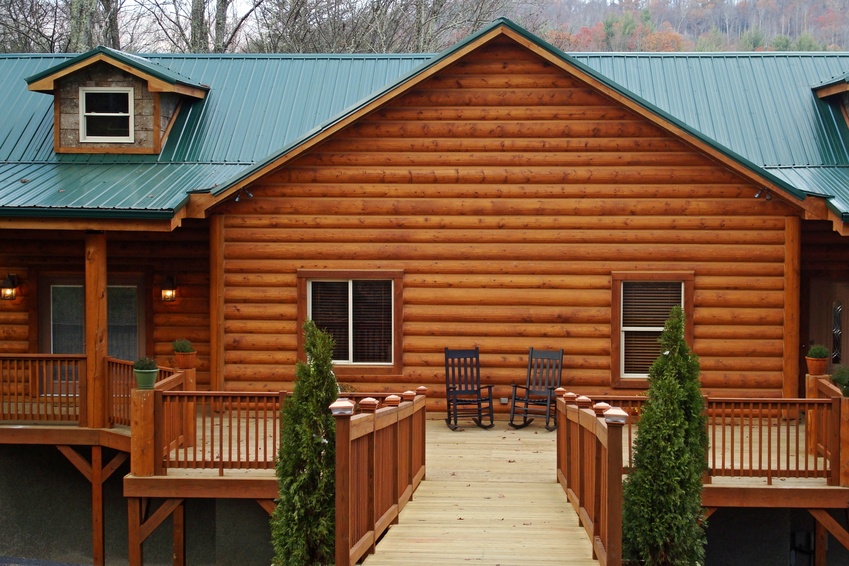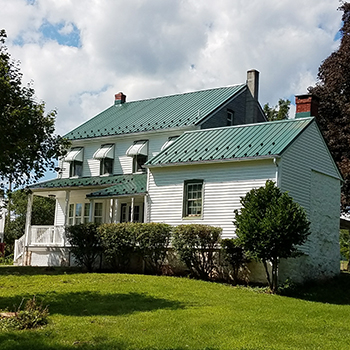Key Pros & Cons of Metal Roofing
Every roofing system offers both advantages and disadvantages. Although in general metal roofing does supply considerably more pros than cons, prudent homeowners should evaluate every aspect of a new roof in light of their unique circumstances before making a purchasing decision. Researching this issue promotes greater long-term customer satisfaction. Today, many fashionable metal roofs contribute to the beauty of homes and commercial buildings in Lancaster, Pennsylvania, and surrounding areas.

About Metal Roofing
The use of metal as a popular residential roofing material did not gain widespread popularity in the United States until comparatively recently. Ancient architects reportedly used copper roofs in places as distant as Sri Lanka and Rome. By the mid-1800s, commercial buildings in the USA often employed lightweight tin shingles. Tin roofs gained greater acceptance in both commercial and residential settings during the period between the Civil War and 1920. One popular system applied a charcoal backing to a thin layer of tin. However, by the late 1930s, metal roofs typically occurred mainly on agricultural or commercial buildings, and asphalt tile roofs and fiber cement shingle roofs had gained popularity in residential settings. With the advent of creative new metal residential roofing systems in recent decades, metal roofs resurged in popularity among homebuilders and roofing contractors.
Currently, homeowners enjoy numerous options for selecting high-quality metal roofs. Roofing installation companies apply many different metal-based roofing systems. Some widely used varieties popularized by an industry roofing lobbying group (4) include five broad categories of products:
- Metal Tile: These individual tiles consist of steel and, frequently, specialized coatings;
- Natural Metals: Widely used in urban historic districts, these systems use shingles composed of uniformly colored metals;
- Vertical Roof Panels: Builders utilize metal panels in both residential and commercial settings;
- Metal Shingles: Manufacturers fabricate this material to resemble slate tiles, often displaying a stamped pattern on the surface. Apply metal shingles in sheets or as individual tiles;
- Metal Imitation Shake Roofs: Fire-resistant roofing composed of metal but engineered to resemble wooden shingles has gained popularity.
Three Disadvantages of Metal Roofs
As a building material used in roofs, metal offers three potential disadvantages. Some of these factors decreased during recent years due to technological advances:
- Rust: Metal roofs remain susceptible to the impacts of rust damage in some situations. The development of water-resistant, tough metal zinc or zinc-aluminum metallic coatings significantly decreased this problem.
- Snow Risks: In some locations prone to heavy sudden snowfalls, pitched metal roofs may permit a snow load to slip from the roof abruptly. This situation may cause accidents.
- Noise: Poorly insulated metal roofs sometimes transmit noise during periods of heavy rainfall or hail.

Benefits of Metal Roofs
Metal roofs do offer advantages. Perhaps for this reason, property owners often select these systems. Consider seven of these benefits:
- Durability: Today, roofing systems utilizing metal tend to outlast comparable asphalt systems by a factor of two to four times. A durable metal roof may last 50 years (or longer).
- Cost-Effectiveness: Although often more expensive initially, the extended durability of metal-based systems may render them the most economical roofing option.
- Versatility: Currently, you can locate excellent metal roofs in virtually every color, tone and architectural style. Some manufacturers have developed metal tiles imitating other popular construction materials.
- Strength: Modern roofs composed of metal frequently display great strength and wind resistance capabilities. Some products carry a rating for use in 150 mile per hour winds, for example. Additionally, during lightning strikes metal roofs may help protect underlying non-metallic structure.
- Termite Resistance: Unlike wooden roofs, metal roofs won’t sustain termite damage.
- Energy Efficiency: Scientists have developed a variety of ceramic coatings which, when applied to metal roofs, enhance the ability of the surface to reflect (and not absorb) heat.) Today, these coatings often make metal roofs a highly energy-efficient option.
- Recyclability: Roofing installation companies or homeowners can recycle metal roofing materials easily.
Research Your Roofing System Thoroughly
By discussing your roofing plans carefully with an experienced roofing contractor, you’ll gain insight into available products and roofing trends. Metal roofs often represent a wise selection. Researching this topic in depth holds great benefit for real estate owners.
← Back To Articles
